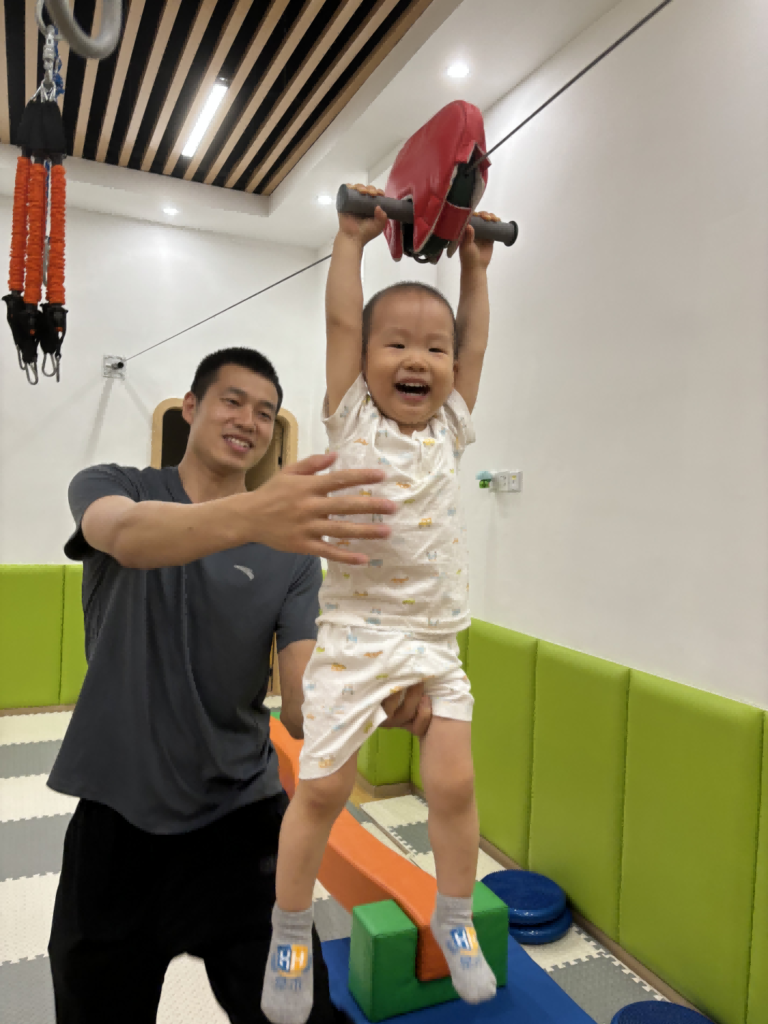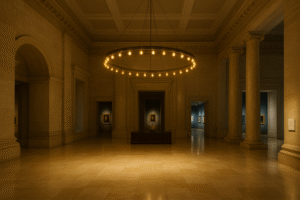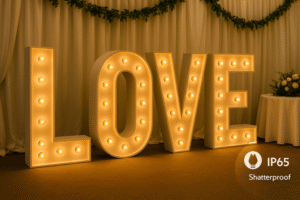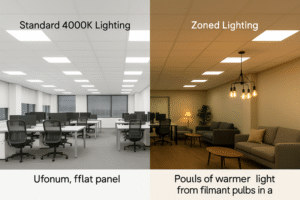Your commercial space feels fixed and uninspiring. The walls are too close, the ceiling too low, and the overall atmosphere is static, limiting how you can use the area from one day to the next.
Yes, dynamic LED lighting acts as a form of "architectural illusion." By strategically changing the color, intensity, and direction of light, you can manipulate human perception to make a space feel larger, taller, more intimate, or more focused.
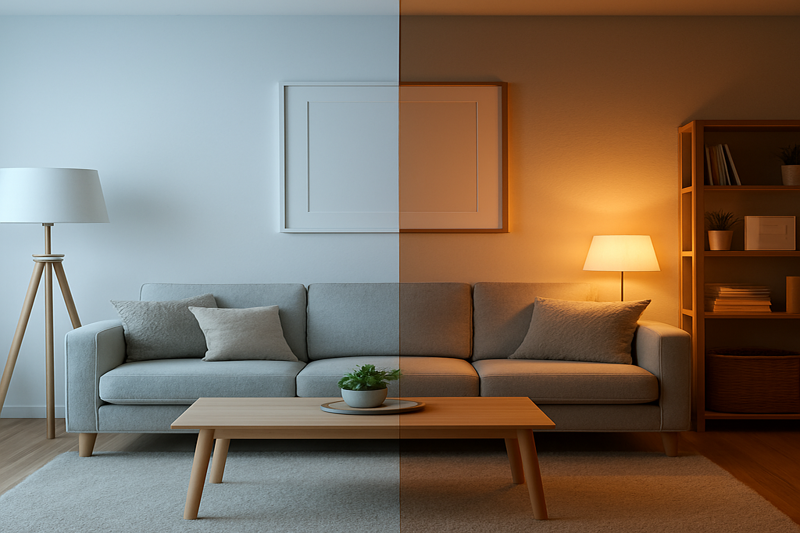
I remember meeting a client, a boutique hotel owner in the US, who was struggling with a long, narrow lobby. He called it "the tunnel." He had received quotes for major structural changes to make it feel wider and more welcoming, but the cost was astronomical. He saw lighting as just a utility to make the space visible. I introduced him to the concept of dynamic perception. We mapped out a plan using arrays of our G9 bulbs in fixtures that would graze the long walls with light, pushing them apart visually. We also programmed a slow, subtle shift in color temperature throughout the day, from an energizing 4000K in the morning to a welcoming 2700K in the evening. The result transformed the "tunnel" into an engaging, dynamic entrance at a fraction of the cost of construction. He became a firm believer that light is the most flexible building material you can have.
How Can Light Make a Small Room Feel More Spacious?
Your retail space or office feels cramped and claustrophobic. Customers don't linger, and employees feel penned in, which hurts both sales and productivity. You can't physically move the walls.
To make a room feel larger, use light to create the illusion of distance. Illuminate the walls and ceiling with bright, cool-toned light (4000K-5000K) to make them visually "recede" and feel further away.
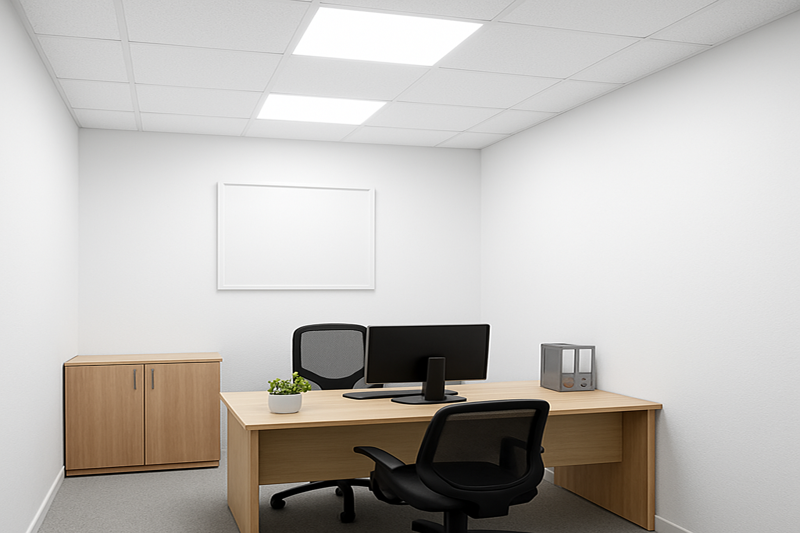
This is one of the most powerful and practical applications of lighting psychology. Our brains are hardwired to interpret bright surfaces as being more distant than dark ones. The single biggest mistake people make is focusing all their light downwards onto the floor and furniture, which can create a "cave effect" where the walls feel like they're closing in. The key is to shift the focus to the vertical planes—the walls. A technique called "wall washing" uses fixtures to cast a smooth, even layer of light across an entire wall. This erases shadows in the corners and makes the boundary of the room seem to dissolve. Combining this with a cooler color temperature, which mimics the expansive quality of daylight, enhances the effect. For my clients, like product managers or buyers, this is a cost-effective solution they can offer their customers to dramatically improve the value and feel of a small commercial space without any structural changes.
The Power of Vertical Illuminance
Lighting the vertical surfaces in a room is more impactful on our perception of spaciousness than lighting the horizontal floor.
- Wall Washing1: This creates a uniform brightness on a wall, making it feel smooth, clean, and distant. It's excellent for making a narrow room feel wider.
- Wall Grazing: This technique places light very close to the wall to highlight its texture (like brick or stone). While dramatic, it can sometimes make a space feel smaller by calling attention to the wall's surface. For creating spaciousness, washing is usually preferred.
- Ceiling Illumination: Lighting the ceiling, especially by bouncing light off it from uplighters, makes it feel higher and lifts the entire room.
The Critical Role of Color Temperature
| Color Temperature2 | Psychological Effect | Perceived Space | Ideal Application |
|---|---|---|---|
| Warm White (2700K - 3000K) | Cozy, intimate, advancing | Makes a room feel smaller, cozier | Restaurants, lounges, hotel rooms |
| Neutral White (3500K - 4000K) | Alert, clear, balanced | Neutral effect on perceived space | Offices, modern retail, kitchens |
| Cool White (4000K - 5000K+) | Expansive, airy, receding | Makes a room feel larger, more open | Small retail stores, warehouses, galleries |
How Do You Create Intimacy in a Large, Open Space?
Your large restaurant, hotel lobby, or open-plan office feels cold and impersonal. People feel exposed and uncomfortable, and the vastness of the space prevents any sense of a cozy, private corner.
To create intimacy, you must reverse the technique: use warm-toned, lower-intensity light focused directly onto specific zones like tables or seating areas, while leaving the surrounding areas in relative darkness.
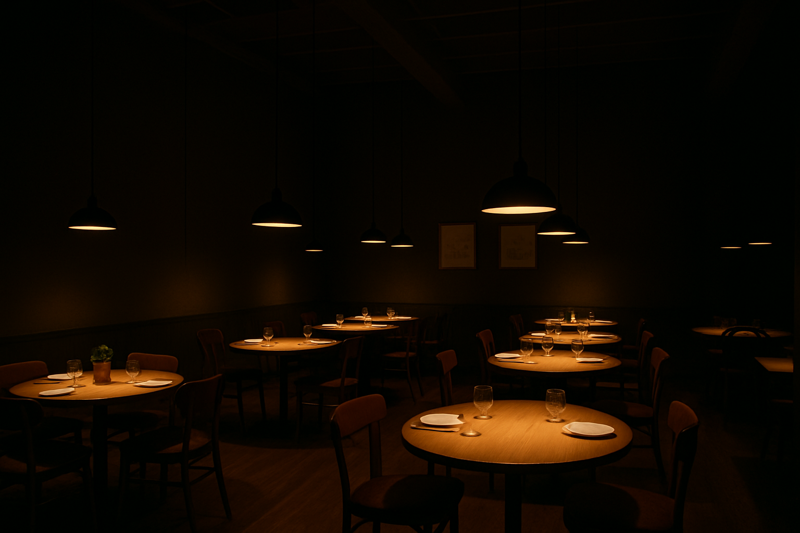
This strategy is often called creating "pools of light." Think of the primal comfort of a campfire: a bright, warm center of focus in the dark. We replicate this in a modern interior. By creating high contrast between brightly lit areas and dimmer surroundings, you create psychological boundaries. In a restaurant, a focused pool of warm light (our 2700K filament bulbs work perfectly here) over a dining table defines that table as a private, intimate space for the people sitting there. The rest of the large, noisy room fades into the background. This not only improves the customer experience but can also be a powerful tool in retail. By spotlighting a specific product display and dimming the general pathway lighting, you draw the customer's eye and create a sense of importance and discovery around that item. It’s about using darkness as much as you use light.
The Campfire Effect: Contrast is Key
The human eye is naturally drawn to the brightest point in its field of vision. High contrast3 is the most effective way to guide attention and define space. In a large room, if everything is lit uniformly, there is no focus. By dimming the general lighting and using narrow-beam spotlights, you take control of where people look and how the space is broken down into smaller, more manageable zones. This is fundamental to creating a hierarchy of importance within a space.
Using Light to Guide and Direct
In a large retail environment, this same principle can create a customer journey4. A pathway can be lit with a lower level of ambient light, while key decision points—intersections, new product displays, checkout counters—are highlighted with brighter, more focused light. This subtly guides the customer through the store, reducing the feeling of being overwhelmed by a vast space and increasing the likelihood of them discovering key products. Our versatile G9 and spotlight modules are perfect for this targeted approach.
Can Light Change How People Move Through a Space?
Your customers wander aimlessly in your store, or employees always take the same inefficient route through the office. You want to guide them, create a flow, and highlight important areas without using physical signs or barriers.
Absolutely. Dynamic lighting can create "visual pathways." By using linear patterns, varying brightness levels, or even programmed sequences of light, you can subconsciously prompt people to follow a certain path and direct their attention.
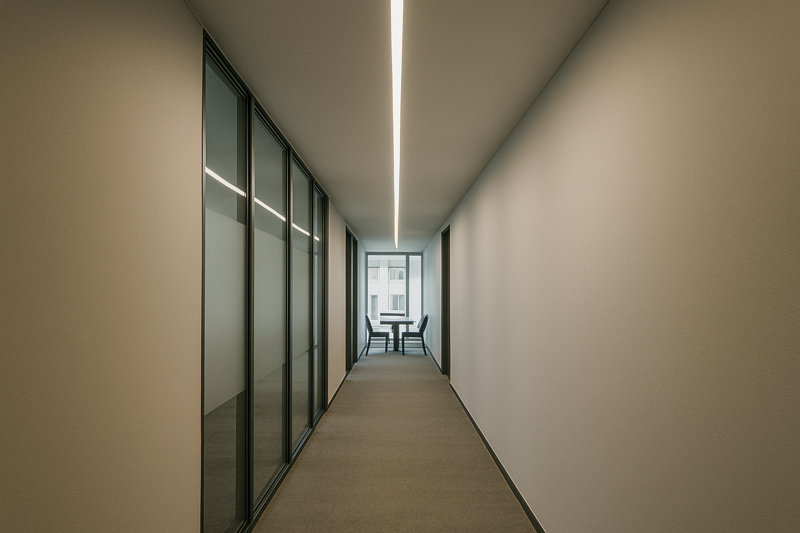
This is where we move from static perception to actively influencing behavior. Our brains are conditioned to follow lines and move from darker areas toward lighter ones. A client running a large showroom in the UK was having trouble getting visitors to explore the entire space; they would cluster near the entrance. We designed a system using a series of our dimmable spotlights. We created a subtle gradient of light, making the back of the showroom slightly brighter than the front. We also used focused pools of light to highlight feature products along a winding path. The effect was immediate. Visitors naturally started to follow the path of light, moving deeper into the space and engaging with more of the products. It’s a gentle, subliminal form of wayfinding that feels natural and intuitive, unlike a bold arrow painted on the floor. The great thing about using dynamic controls is that this path can be changed for a new store layout or a special promotion with just a few clicks.
Techniques for Visual Wayfinding
- Light Gradients5: Creating a gradual increase in brightness towards a destination is a powerful and subtle cue.
- Linear Lighting: Using continuous lines of light on the floor, wall, or ceiling creates an undeniable visual path that people will naturally follow.
- -Rhythmic Patterns: A series of evenly spaced spotlights or downlights creates a visual rhythm that encourages forward movement along a corridor or aisle. This is far more effective than a single, flatly lit hallway.
- Color Cues6: A subtle shift in color temperature can also be used to define different zones and guide people. For instance, a main thoroughfare could be a neutral 4000K, while a special exhibition area could be marked by a shift to a warmer 3000K.
How Can You Make a Room Feel More Dramatic and Luxurious?
Your space is well-lit, but it feels flat, boring, and utilitarian. You want to add a sense of drama, texture, and high-end luxury to impress clients or customers, but the budget for expensive materials isn't there.
Create drama by introducing strong contrast, texture, and layers. Use focused beams of high-CRI light to "graze" textured walls, create sharp shadows, and make key features like artwork or high-end products "pop" from their background.
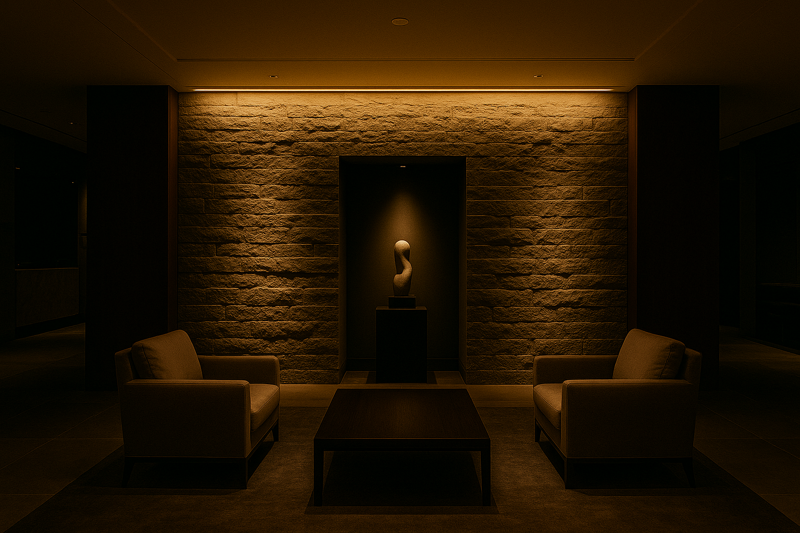
Luxury is often communicated through details and contrast, not just flat brightness. This is where the quality of the light source becomes non-negotiable. To make a product or a material look its best, you need a light with a high Color Rendering Index (CRI). A high CRI means the light shows colors truly and vividly. A cheap, low-CRI light can make a beautiful red fabric look dull and brown. As a manufacturer for quality-conscious buyers, we focus on delivering a CRI of 90+ in our products. When you combine this high-quality light with dramatic techniques, the effect is transformative. A technique called wall grazing, where you place light very close to a surface like brick, wood, or textured fabric, can turn a boring flat wall into a dramatic three-dimensional feature. You are literally sculpting with light and shadow. By layering this with other light sources—some ambient, some focused—you create a rich, complex, and visually interesting environment that feels expensive and custom-designed.
The Three Layers of Dramatic Lighting
A professional and dramatic lighting scheme is built in layers:
- Ambient Layer7: The base level of general, diffuse light that allows for safe navigation. This layer should be controllable and often dimmed to increase drama.
- Task Layer: Focused, functional light for specific activities, like reading or working. This is often ignored in dramatic schemes, but is vital for usability.
- Accent Layer8: This is the key to drama. It's the focused, high-contrast light from spotlights and track lights that creates highlights, shadows, and points of interest. A good rule of thumb is that accent lights should be at least three times brighter than the ambient light.
Conclusion
Dynamic LED lighting is a powerful, cost-effective tool for architectural transformation. It allows you to shape perception, guide behavior, and craft atmospheres, giving you the power to remodel your space with light.
Explore how wall washing can enhance the perception of space and create a more inviting atmosphere in your rooms. ↩
Understanding color temperature can transform your space, influencing mood and perception of size effectively. ↩
Understanding high contrast can enhance your design skills, making your spaces more engaging and visually appealing. ↩
Exploring this topic can provide insights into optimizing retail spaces for better customer experiences and increased sales. ↩
Explore how Light Gradients can enhance navigation and create inviting spaces. ↩
Discover the impact of Color Cues on guiding people through different environments. ↩
Understanding the Ambient Layer is crucial for creating a balanced lighting scheme that enhances both safety and aesthetics. ↩
Exploring the Accent Layer will reveal techniques to create stunning visual effects and focal points in your lighting design. ↩

